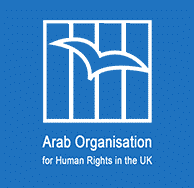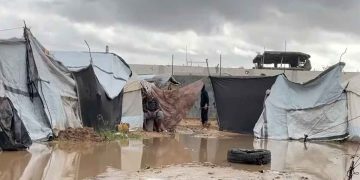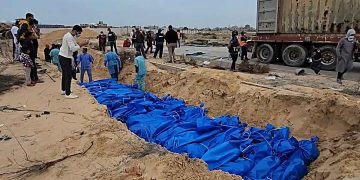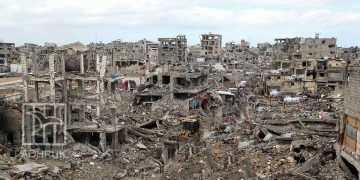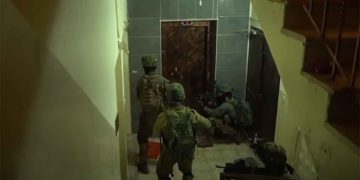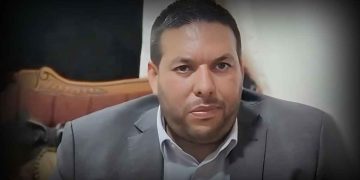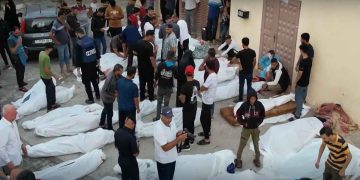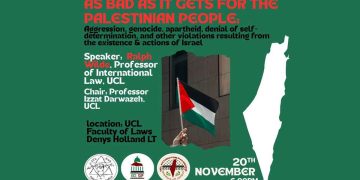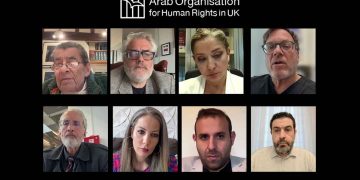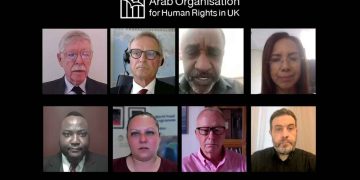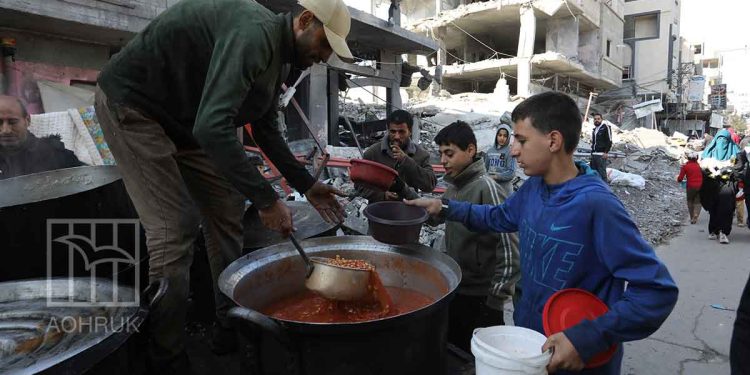Nearly 500,000 Palestinians have been forcibly displaced from their homes in the Gaza Strip since mid-March, amid intensifying attacks by Israeli forces and a persistent refusal to agree to a ceasefire with Palestinian resistance groups.
This latest wave of mass displacement forms part of Israel’s ongoing genocidal campaign in Gaza, which has now extended beyond six months, amid a near-total collapse of infrastructure and the systematic starvation of a besieged population.
According to the United Nations Office for the Coordination of Humanitarian Affairs (OCHA), the most recent mass displacement began with the resumption of hostilities on 18 March and adds to the already unprecedented number of people forced to flee since the war began. The humanitarian crisis continues to deepen due to the lack of shelter, essential resources, and any form of civilian protection.
Israel’s Minister of Defence, Israel Katz, acknowledged that hundreds of thousands have been displaced and affirmed that Israeli forces will maintain their presence in areas they have seized, either temporarily or permanently, in what the occupation refers to as “buffer zones.”
Such statements, coupled with military declarations designating 30% of Gaza as operational security zones, effectively confirm widespread and systematic forced displacement. These actions constitute a grave violation of international humanitarian law and the Geneva Conventions, which explicitly prohibit the forcible transfer of civilians in the context of conflict.
Israel has reportedly used these so-called buffer zones to carry out large-scale destruction. Palestinian residents are forcibly expelled and subsequently barred from returning, while the areas are converted into closed military zones. These measures align with the legal definition of ethnic cleansing and indicate a deliberate strategy to depopulate entire regions.
Despite the worsening humanitarian catastrophe, Israeli authorities continue to obstruct the delivery of humanitarian aid. The United Nations reported that only two of six planned aid missions were allowed on a single day, with four denied—one of which involved a fuel delivery via the Rafah crossing.
This deliberate restriction on humanitarian operations has exacerbated the suffering of the displaced, who are living in overcrowded and uninhabitable areas under dire conditions.
International aid groups have documented escalating hunger and a public health emergency, particularly in areas such as Khan Younis, where tents and basic supplies like blankets are no longer available, and residents face acute shortages of water, food, and medicine.
This deliberate devastation is taking place under the suffocating blockade that Israel has imposed on Gaza for 18 years, a siege that tightened dramatically on 2 March when all crossings were closed, cutting off access to food and medical supplies. As a result, Gaza has descended into a state of famine, with rising death rates due to starvation and malnutrition, especially among children.
Since 7 October 2023, Israel—with explicit political and military backing from the United States—has carried out what has been described by experts as one of the most egregious acts of genocide in modern history. Over 167,000 Palestinians have been killed or wounded, the majority of them women and children, with over 11,000 still missing beneath the rubble.
United Nations estimates suggest that around 1.5 million Palestinians in Gaza are now homeless, either because their homes were destroyed or because they were forced to flee under bombardment.
With no effective international action to halt the atrocities, the framework of international law appears paralysed, while civilians in Gaza are left to face indiscriminate bombardment and a campaign that uses food, water, and medicine as weapons of collective punishment and extermination.
